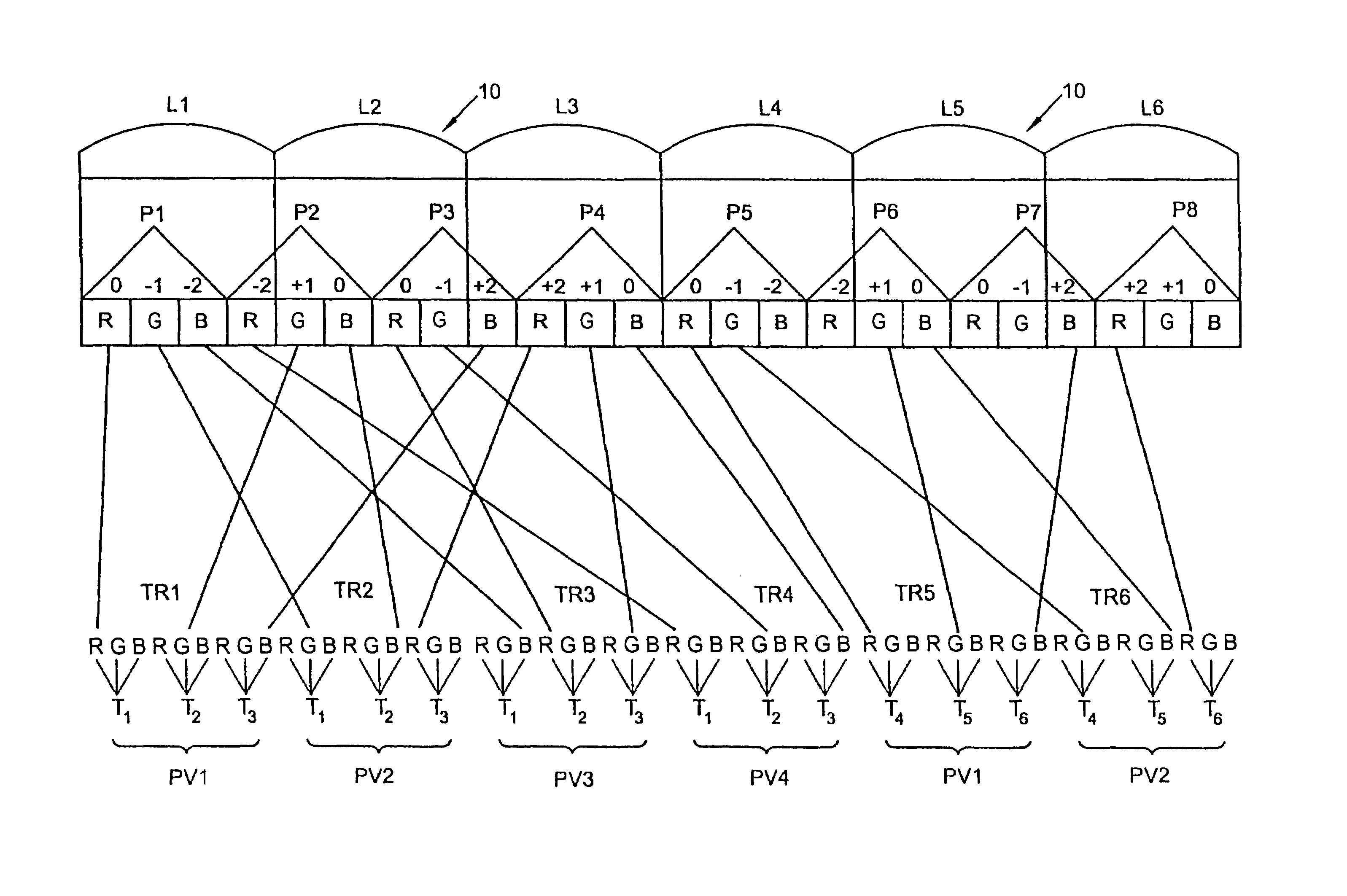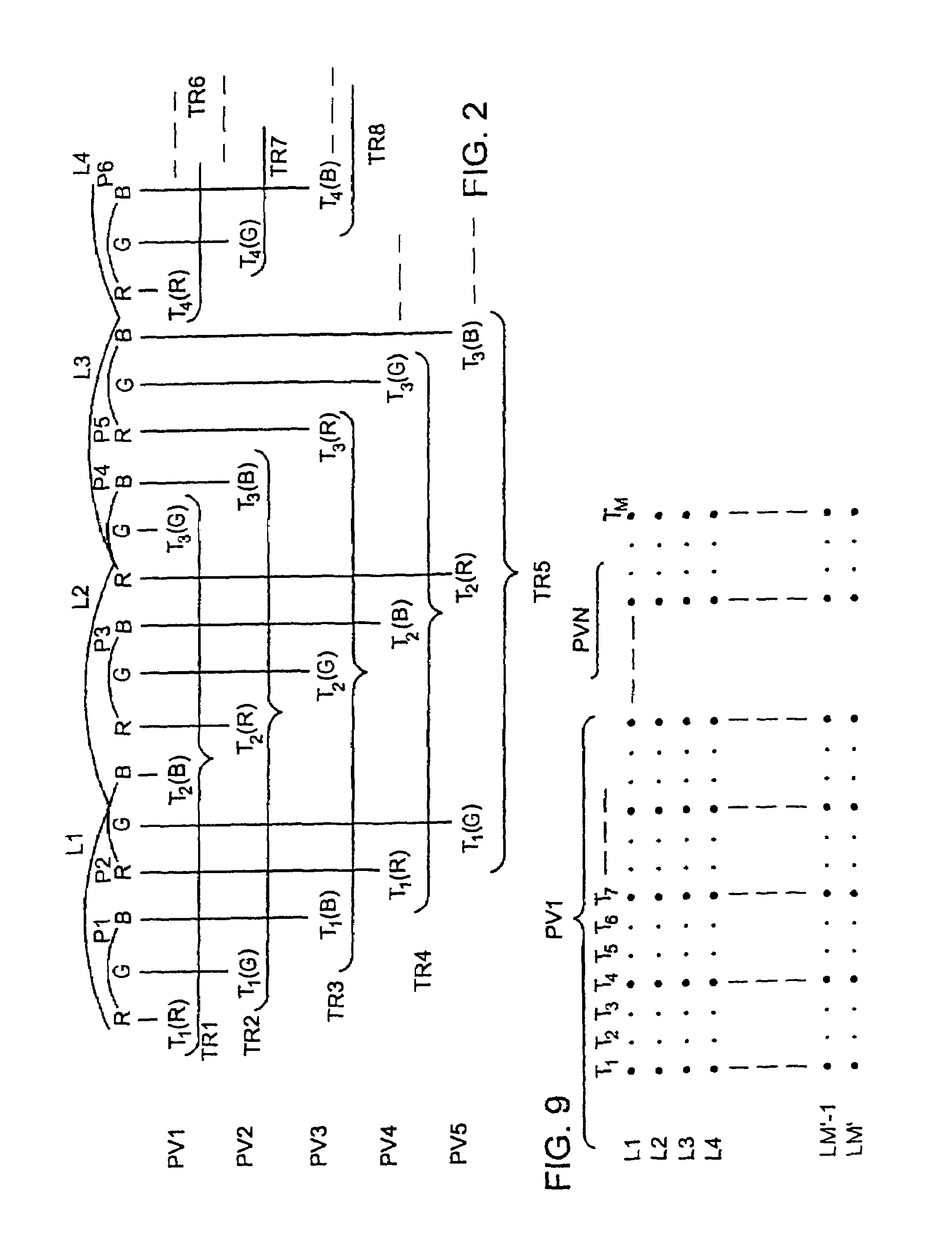Method for autostereoscopic display
a display method and autostereoscopic technology, applied in the field of autostereoscopic display, can solve problems such as not being able to compensa
- Summary
- Abstract
- Description
- Claims
- Application Information
AI Technical Summary
Benefits of technology
Problems solved by technology
Method used
Image
Examples
Embodiment Construction
[0039]In FIG. 1, corresponding to N=4 and p=3, the high definition image has three times as many pixels in the row direction as the standard image used in FIG. 1a of PCT application WO 94 / 26072. To facilitate description, it is shown in the form of an interleaved image comprising, in the row direction, groups of p=3 pixels, i.e. the three first pixels T1, T2, T3 of the first viewpoint PV1, the first three pixels T1, T2, T3 of the second viewpoint PV2, the first three pixels T1, T2, T3 of the third viewpoint PV3, the three first pixels T1, T2, T3 of the fourth viewpoint PV4, and then the next three pixels T4, T5, T6 of PV1, the next three pixels T4, T5, T6 of PV2, etc.
[0040]In the row direction the screen presents display pixels P1, P2, P3, . . . , PM, each made of p=3 color points corresponding to the red R, green G, and blue B color components. The lens array 10 has lenses L1, L2, L3, . . . at a pitch equal to four times the pitch of the color points in the display pixels, which me...
PUM
 Login to View More
Login to View More Abstract
Description
Claims
Application Information
 Login to View More
Login to View More - R&D
- Intellectual Property
- Life Sciences
- Materials
- Tech Scout
- Unparalleled Data Quality
- Higher Quality Content
- 60% Fewer Hallucinations
Browse by: Latest US Patents, China's latest patents, Technical Efficacy Thesaurus, Application Domain, Technology Topic, Popular Technical Reports.
© 2025 PatSnap. All rights reserved.Legal|Privacy policy|Modern Slavery Act Transparency Statement|Sitemap|About US| Contact US: help@patsnap.com



